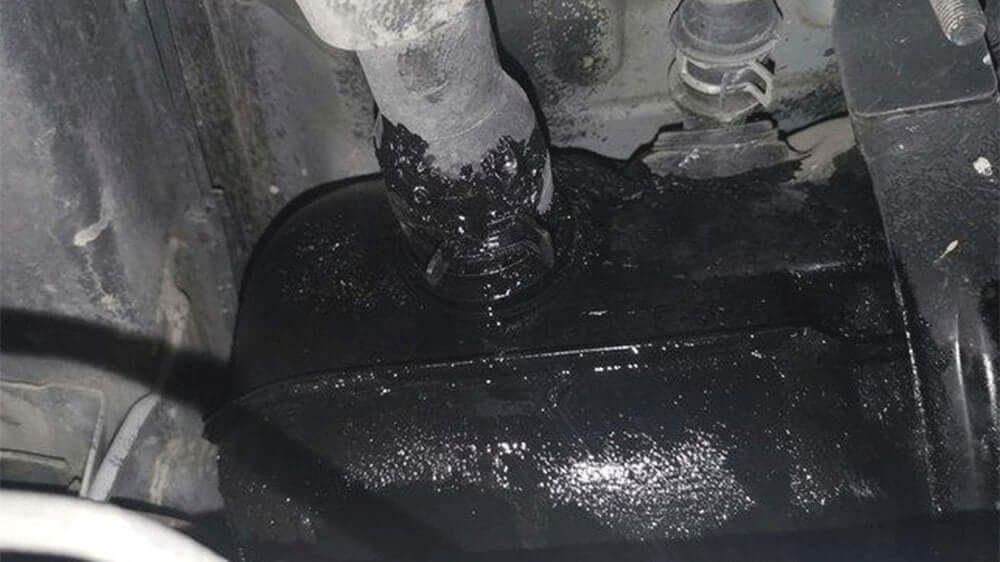
Complete Overview on Car Suspension Systems
To make it easier for everyone to understand the structure of the suspension system, here is a basic introduction to suspension systems.
What Is the Suspension in a Car
The suspension system is the collective term for the components that transmit forces between the vehicle's frame (or body-on-frame) and the axle (or wheels).
Functions of Suspension
The suspension system transmits forces and moments between the wheels and the frame, and absorbs the impact forces transmitted from uneven road surfaces to the frame or body. It reduces vibrations caused by these impacts to ensure a smooth ride.
Components of a Suspension
The suspension system key components include three main parts: elastic elements, steering components, and shock absorbers.

Elastic Elements: Made from materials with high elasticity, these elements primarily support vertical loads and mitigate vibrations and shocks from uneven road surfaces. When the wheel experiences a significant impact, kinetic energy is converted into elastic potential energy, which is stored and then released when the wheel returns to its normal driving position.Elastic elements include leaf springs, coil springs, torsion bars, air springs, and rubber springs.
Steering Components: These devices primarily transmit forces and moments while also providing directional guidance. They control the wheel’s movement trajectory during vehicle operation.
Shock Absorbers: Shock absorbers are the main components that generate damping forces. Their role is to rapidly dissipate vehicle vibrations, improve ride smoothness, and enhance the grip between the wheels and the road surface. Commonly used shock absorbers in vehicles are cylindrical hydraulic shock absorbers, which can be classified into twin-tube, single-tube gas-charged, and twin-tube gas-charged types.
Types of Suspension Systems
Suspension systems can be classified into two main types based on the basic form of their guiding devices: independent suspension and dependent suspension.
Dependent Suspension
The wheels on each side are connected by a solid axle, and both the wheels and axle are suspended from the vehicle body using elastic suspension. When one wheel moves, it affects the other wheel.
Advantages: Simple structure, low cost, high strength, easy maintenance.
Disadvantages: Poor comfort and handling stability.

Independent Suspension
Each wheel is individually suspended from the frame or body using its own elastic suspension. The movement of each wheel is independent and does not affect the other.
Advantages: Lightweight, reduces impacts on the body, improves vehicle comfort and stability.
Disadvantages: Complex structure, high cost, difficult maintenance.
Modern passenger cars mostly use independent suspensions, which can be further divided into different types based on structural design, such as wishbone, multi-link, trailing arm, and MacPherson strut suspensions.
1.Wishbone Suspension
The wheels move in the transverse plane of the vehicle. It can be further divided into single-wishbone and double-wishbone types.
Single-Wishbone:
Advantages: Simple structure, high resistance to roll.
Disadvantages: High tire wear, not suitable for high-speed driving.

Double-Wishbone:
Equal-Length: Maintains the steering axis angle but causes significant changes in track width and tire wear.
Unequal-Length: Provides better lateral stiffness, keeping the track width and alignment parameters within limits to ensure good driving stability.

Double-Wishbone with A or V-shaped arms:
Advantages: High lateral stiffness, good directional stability, excellent anti-roll characteristics, good grip.
Disadvantages: High manufacturing cost, complex alignment settings, large transverse installation space.

2. Trailing Arm Suspension
The wheels move in the longitudinal plane of the vehicle. It can be further divided into single-trailing-arm and double-trailing-arm types.
Single-Trailing-Arm:
The wheel moves by rotating around the arm's axis, causing significant changes in the steering axis angle.

Double-Trailing-Arm:
Features two equal-length arms forming a parallel four-link mechanism, which keeps the steering axis angle constant, making it suitable for steering suspension.
3. Multi-Link Suspension
Uses multiple (3-5) linkages to control wheel position changes.
Advantages: Strong comfort and handling stability.
Disadvantages: Relatively complex, high cost, large space usage.

4. MacPherson Strut Suspension
Consists of a coil spring, shock absorber, and triangular (A-shaped) lower control arm. It is currently the most commonly used front suspension for passenger cars.
Advantages: Simple structure, compact size, lightweight.
Disadvantages: Limited support for lateral forces, prone to body roll, noticeable nose dive during braking.
5.Adjustable Suspension Systems



Vehicle Tilting:
b.Broken shock absorber spring
c.Adjustable suspension damage
d.Incorrect adjustment of adjustable shocks
Abnormal Tire Wear:
Often caused by incorrect or unperformed wheel alignment after replacing new parts.Proper suspension maintenance and alignment are essential to prevent issues like vehicle tilting and abnormal tire wear, ensuring that the suspension system continues to perform optimally.


























